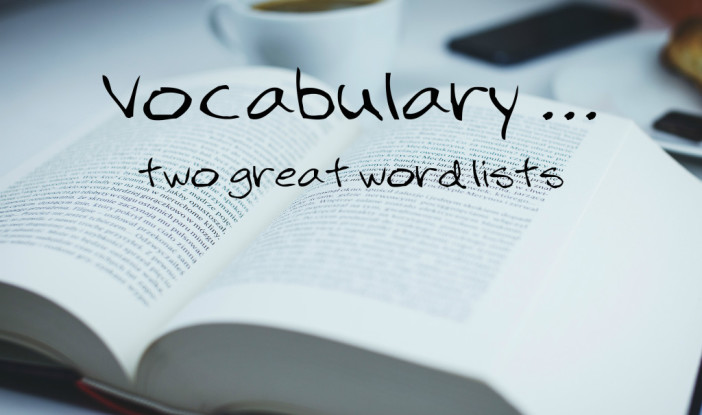Vocabulary … two great word lists
In an earlier post, I discussed how researchers have found that learning vocabulary from word lists can actually be very effective. In this post, I’d like to talk specifically about the Fry Word List of 1000 high-frequency words (for beginners) and the Academic Word List (for intermediate and advanced learners).
The Fry Word List presents the most commonly occurring “sight words” in English. Developed by Dr. Edward Fry for American schoolchildren, this list contains the words most frequently used in reading material for Grades 3 – 9. The list is divided into ten sublists of 100 words each, with the sublists arranged in order of frequency; in other words, sublist 1 presents the most common words while sublist 10 contains the least common of those 1000 words. This organization makes it easy for students to progress smoothly and logically in their vocabulary learning.
The Fry words are called “sight words” because readers should be able to recognize these words “on sight.” Teachers sometimes contrast these words with phonics words, which are generally words that can be sounded out phonetically (like con-tract or bath-tub). But, in fact, both methods are useful to develop reading skills and, in American schools, are usually combined in reading classes.
The Fry Word List is very helpful for beginning English learners because these words are so common. They account for about 90% of the words in a typical book or website. Also, you can Google “Fry Word List” and find many online resources for learning and reviewing them. Although these are often targeted for American children, there’s no reason why adult English learners can’t use them. I highly recommend that beginners use this word list along with a good beginners dictionary like the Oxford Picture Dictionary.
The Academic Word List (AWL) is aimed for intermediate and advanced students. Like the Fry list, the AWL also contains frequently occurring words, but these words appear in a wide range of academic texts. However, don’t be misled by the word “academic”: these are not technical or specialist words like protozoa or photosynthesis, but rather words like create and occur.
The AWL contains 570 different “word families,” with a headword (such as evident) and other forms of that word (such as evidenced, evidence, evidently, and evidential). Like the Fry list, the AWL contains ten sublists; in the AWL, the first nine sublists have 60 word families while sublist 10 has 30. The AWL has also organized the sublists by frequency, making it easier to manage your learning since the words on the first sublist are much more common than those on the last.
Studying the AWL offers a number of benefits. First, there’s a wide range of online resources that provide user-friendly exercises and quizzes to test your knowledge. In addition, you can master different forms of the same word, which is one of the biggest challenges for English learners. I frequently hear students confuse words like intelligent and intelligence and economic and economical. It makes sense to differentiate these words when you first learn the headword. Finally, as the developers of the AWL point out, “Just over 94% of the words in the AWL occur in 20 or more subject areas. This principle ensures that the words in the AWL are useful for all learners, no matter what their area of study or what combination of subjects they take at tertiary (university and above) level.” This means that you’ll be encountering these words again and again in the more advanced texts you’ll need to read for TOEFL, IELTS, or higher education in an English-speaking university.




